‘How sustainable is Nike?’ is not actually a question we get asked a lot.
Frankly, people don’t seem to care about the makers behind the largest maker of athletic brand in the world, the creators of Air Jordans and the owners of Converse. There’s little doubt that’s sports sponsorship and endorsements from celebrities, including a very cool film starring Matt Damon and Ben Affleck, buys you – a willingness for people to turn a blind eye to the suffering in your supply chain.
But, it was a question brought to our attention by multiple labour organisations in South Asia, who claim Nike committed “wage theft” during the pandemic.
Then the Lioness goalkeeper Mary Earps’ jersey controversy happened.
When we were researching this uproar, we surfaced a Guardian article titled: ‘How activism forced Nike to change its ethical game‘. This article is now more than 10 years old and the subtitle reads: “Twenty years of campaigning for workers’ rights changed the corporate culture of one of the world’s biggest brands – and the sportswear industry”.
Then, we couldn’t resist. We had to ask the question, has Nike really changed its ethical game?
How sustainable is Nike: Nike in numbers
Founded: 1964
Subsidiaries: Air Jordan and Converse
Revenue: $37.4 million in 2020, $44.5 million in 2021 [1], $46.7 million in 2022 [2]
Number of stores: 1,032 worldwide [3]
Number of products produced each year: Unknown (or undisclosed) but “hundreds of millions of shoes” gives you some idea [4]
Founders Net Worth: Founder Phil Knight and his family are the largest shareholders in Nike. They are estimated to worth $40.3 billion [5]
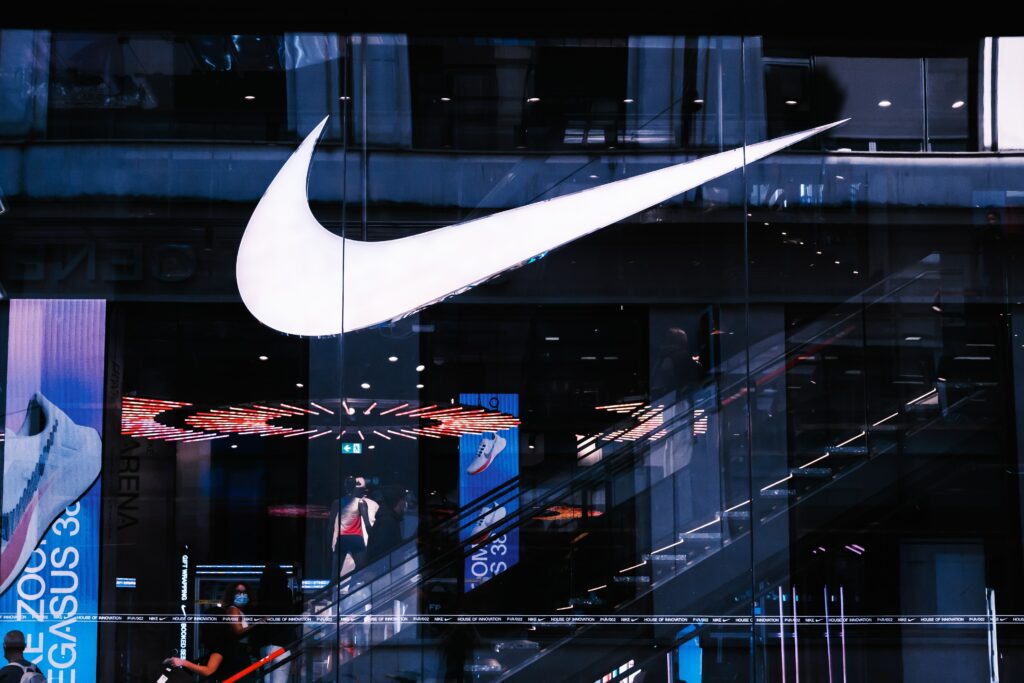
How sustainable is Nike? What Nike say on their shopping pages
We took a look around Nike’s shopping pages and we couldn’t really see any sustainability information – no mention of who makes the shoes or where or what materials are used.
These are clearly not pieces of information a typical Nike feels their customer needs to be concerned with.
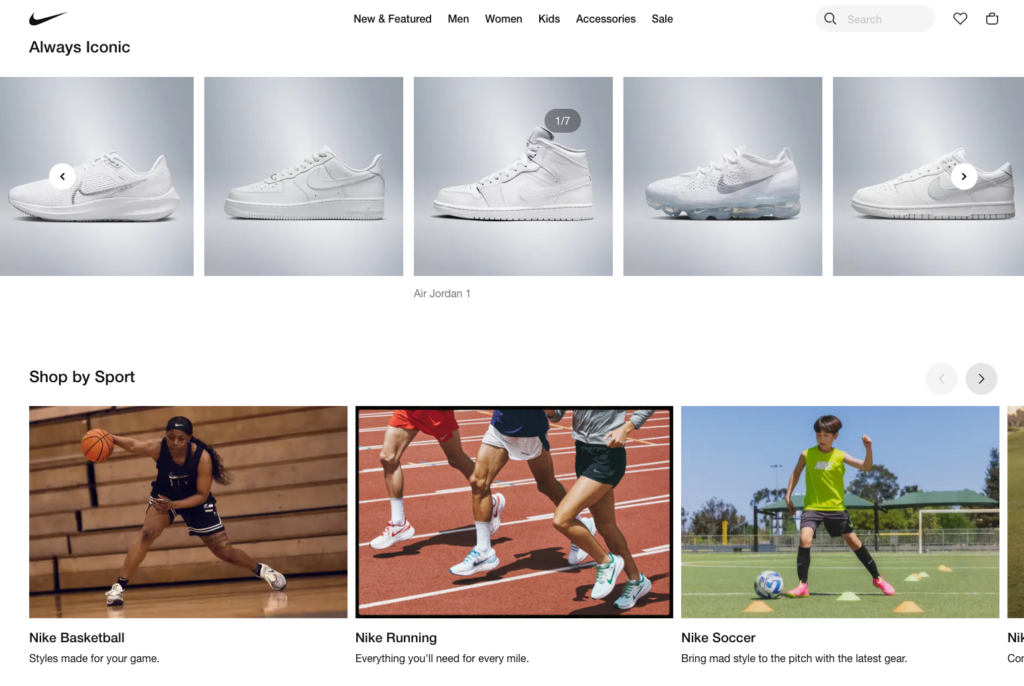
How sustainable is Nike? What Nike say on their sustainability pages
But, if you are looking for sustainability information, the sustainability section of the Nike website is impressive.
These pages tick all the right boxes and say all the right things* in all the right places to make you feel that Nike is truly dedicated to sustainability and the people in its supply chain. Or you’ll find a lot of information that isn’t distilled into clear messaging.
You’d think their marketing team could do a better job of really highlighting what’s going on.
Or maybe, they’re really good at hiding what’s really going on.
For example they make bold claims like: “Nike has pushed the boundaries of sustainable innovation for decades.”
Front and centre are their 2025 goals, which are shown in the screenshot below.
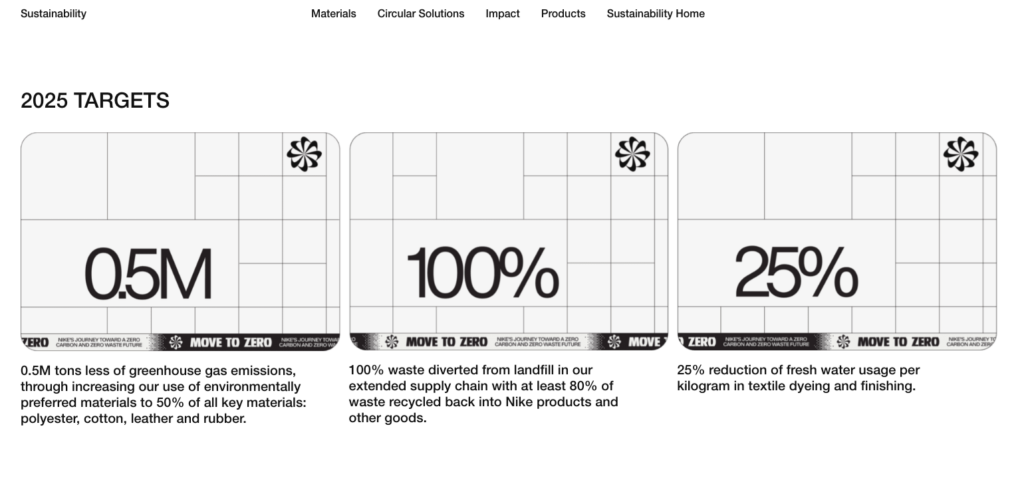
How far along are they into achieving these goals?
That information is not so clear to find.
Weird, huh?
Or maybe not so weird.
And, if we’re honest with ourselves, really honest, we’re complicit in Nike’s greenwashing. As customers we welcome such commitments and don’t press too hard for the evidence. It means we can continue to shop from Nike as we were before. Only now we can shop with a clear conscience, too.
For, they’re moving in the right direction and we need to support them on that journey, right?
Erm…

How sustainable is Nike? People
If we click through a couple more pages we find the people section. Here Nike say:
“We’re doubling down on pre-competitive collaborations with suppliers, competitors, NGOs, and governments to shift the status quo in the global supply chain… We know women make up 70 percent of our supply chain workforce, and we’re using our influence and know-how to ensure they can access the support, pathways, and resources they need to thrive.”
If Nike’s good intentions are mirrored by good actions, then why have a coalition of 50 labour unions and organisations from across Asia and the USA taken action against Nike for stolen wages from some of the most vulnerable people in its supply chain?
We asked Nike about this and didn’t hear back.
Being paid the money they’ve earned is a resource most workers need to survive, let alone thrive.
And let’s put this into perspective:
The Institute of Policy Studies recently released its annual report comparing the executive pay of major US-based companies with the median pay of workers in those companies. Nike made the list with its CEO John Donahoe II’s total compensation of $28.84 million being the equivalent of 771 median worker salaries.
However, that statistic only tells a piece of the story, as it doesn’t account for workers in Nike’s supply chain. AFWA and GLJ-ILRF calculated that Donahoe’s earnings equal 31,316 times the yearly earnings of an average Sri Lankan worker who makes Nike clothing. They say this is “a staggering statistic for a company that has repeatedly used the word “equality” above the iconic swoosh in its advertising”.
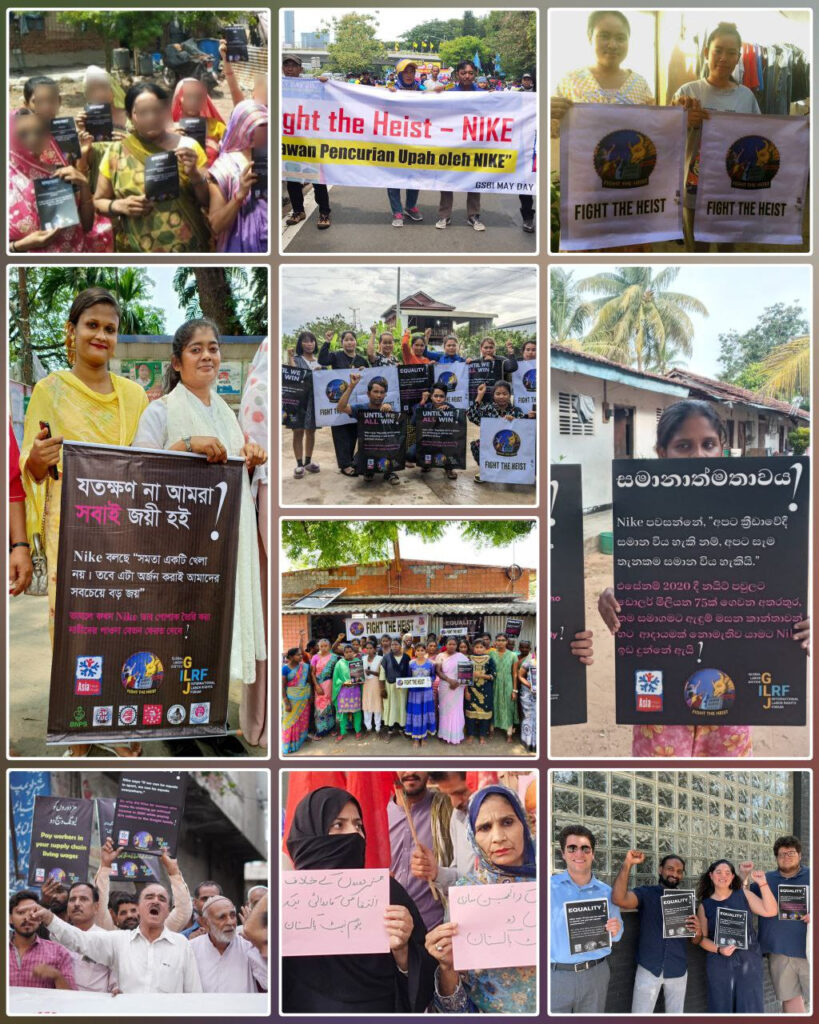
How sustainable is Nike? Fight The Heist
Around 1.2 million people power Nike’s supply chain.
In their statement on forced labour Nike admit: “NIKE is the largest seller of athletic footwear and apparel in the world.”
This means they have a lot power and influence over how factories work across the globe – even though they don’t own them. After all, who doesn’t bend over backwards to keep their biggest customers happy?
But, while Nike is great at talking the talk, their efforts leave a lot of people in precarious situations.
“Nike preaches equality in sports, but what about for the women who put their blood, sweat and tears into making its sportswear?” asks Abiramy Sivalogananthan from labour organisation Asia Floor Wage Alliance.
They co-authored the Fight the Heist report, which details how the wage theft of Asian garment workers directly led to high corporate profits for global fashion brands.
Sivalogananthan adds: “In our latest report, we recorded how the Knight family – Nike’s billionaire family owners and a top shareholder – pocketed USD $74 million in dividends by the Spring of 2020 in the first months of the pandemic, while garment workers in Asian countries suffered pay cuts, mass layoffs, and worked hours overtime without pay.”
“Nike talks a lot in its advertising about empowering women and girls,” says Noah Dobin-Berstein, lead organiser for the Global Labor Justice – International Labor Rights Forum (GLJ-ILRF). “We call on the organisations and athletes that carry Nike’s message of empowerment to stand with us and demand that Nike pay back its women workers for the massive wage losses they experienced during the pandemic.”
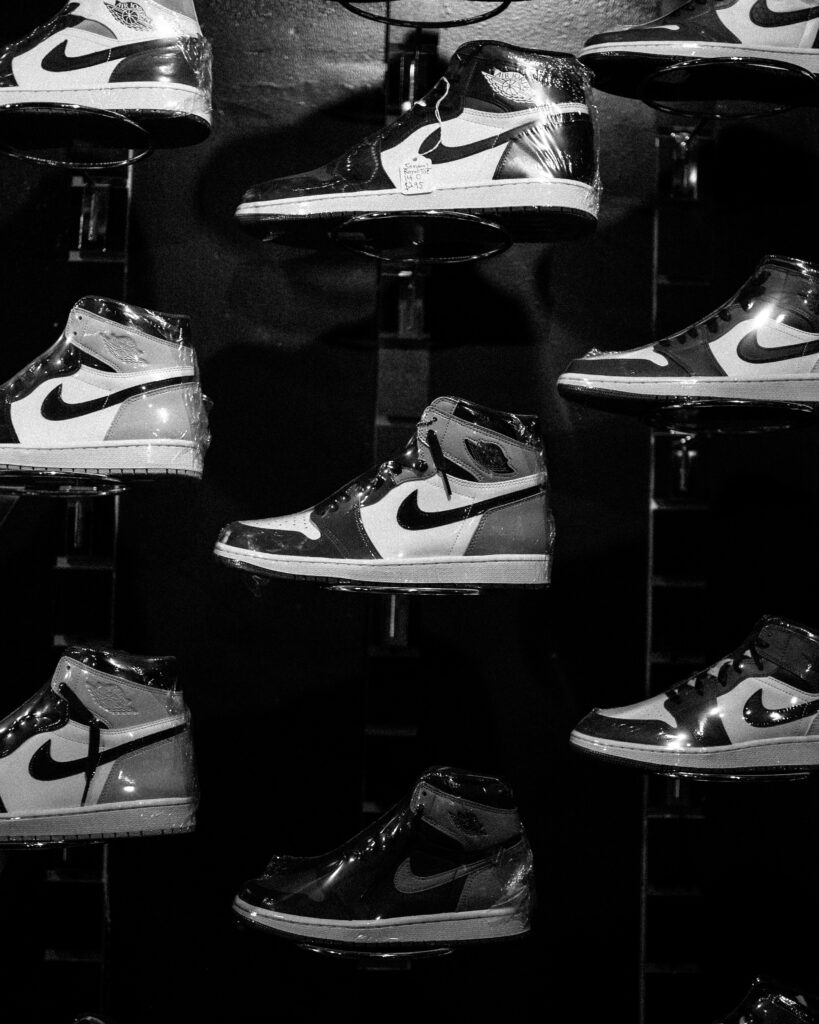
How sustainable is Nike: Materials
As the biggest sports apparel brand, the sustainability spotlight is often shined on Nike. ‘We don’t see these’, you cry? Funnily enough, these reports don’t get much airtime because Nike’s advertising budgets help to drown them out.
In the Synthetics Anonymous report released this year[6], for example, Nike’s use of synthetic materials is revealed to surpass other brands significantly.
Nike report using 245,239 tonnes worth of polyester and rubber – equivalent to more than 40,000 fully loaded Boeing-747 aeroplanes. This number doesn’t include other widely used synthetic materials like acrylic, elastane, and nylon.
On a positive note, Nike did report a 15% drop in polyester use. But, this still means they’re using way more synthetic materials than the brand revealed to have the second highest volumes of synthetics and polyester – Inditex, who owns Zara. On a less positive and more realistic note, for this figure to meaningful, it needs to be considered alongside their overall production volume, which Nike didn’t disclose.

How sustainable is Nike: Take-Back Schemes
Overall production volume is the elephant in the room.
An often quoted figure is the average consumer is buying 60% more clothes than they did in 2000, and keeping them for half as long. This was according to a McKinsey study in 2016 and today, that figure is likely to be even higher.
Essentially, we are producing and buying more clothing than we ever did before and it is cheaper (thanks to synthetic materials which are way cheaper to produce), worn less and thrown away sooner.
This is causing huge landfill and waste issues.
Big global brands like Nike respond to this issue with instore recycling boxes which say things like: “Move to zero. Recycling, donation. Donate, instead of throwing away. We will clean, donate or recycle your worn item, giving it a second chance.”
While the concept of textiles recycling holds promise, recycling technologies are still in their infancy. The reality is less than 1% of used clothing is turned into new clothing today. [8]
How sustainable is Nike: Take Back Trickery
Plus, a recent investigation, Take Back Trickery, looked into the trade of used clothing at one of its key destinations: Kenya. [9]
It reveals the used-clothing trade to be at breaking point. More than 900 million items were sent to Kenya from around the globe in 2021. Out of these, nearly 150 million items came from the European Union (EU) and the United Kingdom (UK).
The investigation revealed that 20-50% of clothing ending up in second-hand markets in Kenya is of such low quality, damaged, stained or otherwise unsellable, that it almost immediately becomes waste.
Much of it also is made of plastic, adding to fashion’s significant plastic pollution impacts.
Much of it was from Nike.
This is not addressing the waste issue. This is offloading it to another country – with little regard for the devastating consequences for the environment and communities.
The report concludes: “Not only do take-back schemes fail to guarantee that collected clothes are recycled or reused, but many encourage shoppers to buy more cheap clothes… While take-back schemes may appear to promote sustainability and responsibility, they are often a form of greenwashing, allowing brands to maintain a positive image without making significant changes to their unsustainable business model or moving away from their reliance on fossil-fuel based synthetics.”
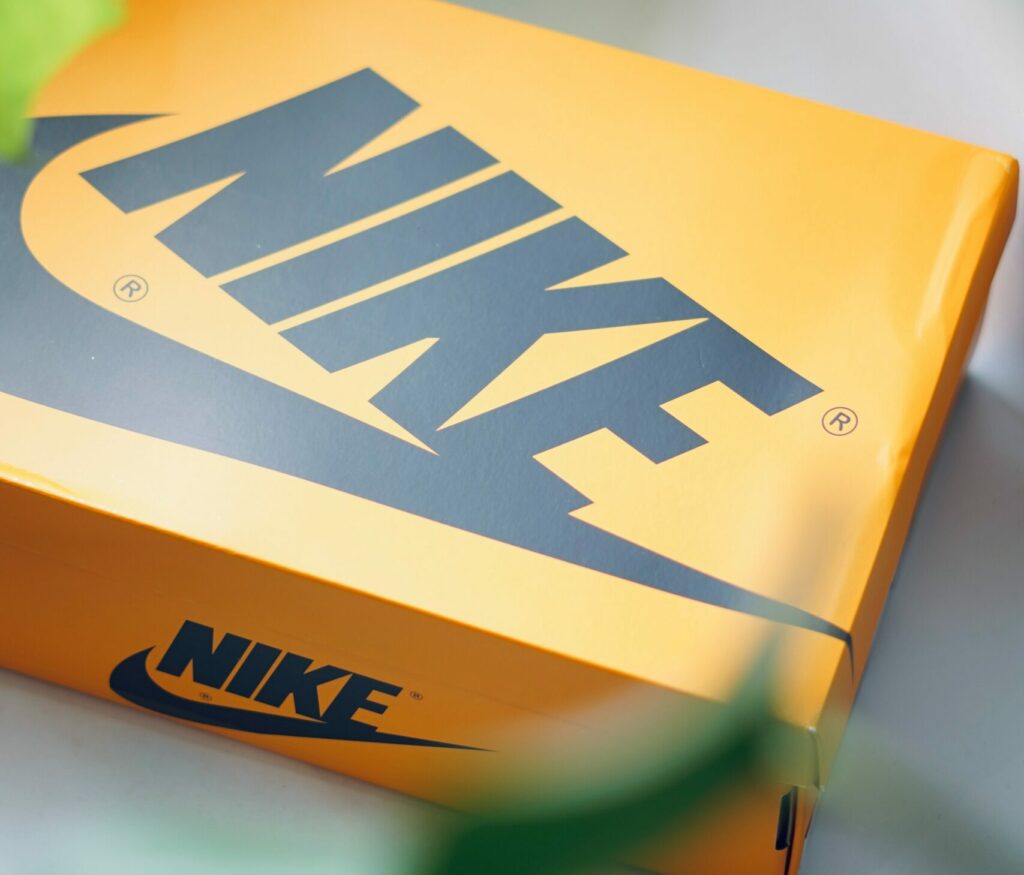
So, can I shop at Nike with a clean conscience?
Unfortunately, now you’ve reached this point in the article, you can’t say ‘I thought they were trying’ or ‘I didn’t know’ when it comes to shopping with Nike.
Nike is a huge global player in the fashion industry. The likelihood there is exploitation in their supply chain is high. The likelihood they don’t pay a fair wage is high. And the likelihood their manufacturing methods pollute is ridiculously high.
At the very least, you’d be buying from a brand that continues to profit from an inherently unsustainable business model rooted in overconsumption and shrouded in a lack of transparency.
Enough with ‘how sustainable is Nike?’ We all know it isn’t.

Nike: Why greenwashing is so harmful
The fundamental issue is this:
Small sustainable gestures of good don’t balance all the harm continuing to be done.
A sustainable like of “Space Hippie” trainers isn’t enough to negate the negative impact of the rest of Nike’s supply chain.
Claiming to be ‘more’ sustainable is problematic for a number of reasons. Not least because it redirects business away from genuinely purpose-driven brands. Those that are impacting real change desperately need support.
Instead, the Knight family are making huge profits while millions of workers earn poverty wages and are at risk of abuse every day.
So, what do to do with this knowledge? To shop or not to shop from Nike:
Instead of buying from Nike, buy from brands who are genuinely working to create change. Shop from brands whose business models are designed with the planet and people in mind. Support brands who are transparent in what they do, who pay their makers living wages, whose focus is on circularity, reducing waste and using truly eco-friendly materials…
Don’t know where to find such incredible brands?
Check out our ethical directory or our roundup of sustainable athleisure brands for men and sustainable activewear for women.
List of tools to see for yourself how sustainable a brand is:
Of course, the burden of sussing out whether a brand is genuine or greenwashing shouldn’t fall to the individual conscious consumer.
But unfortunately, profit-driven fashion giants like NIke clearly can’t be trusted to be transparent about how they treat their workers and their impact on the environment.
Sorting through the facts, figures and fibs is no easy feat. That’s why we’ve done the research – to help you get a better picture of the real story behind your clothes.
But don’t just take our word for it. Below we’ve listed five brilliant organisations whose work has informed this article and who we highly recommend you check out! These organisations go above and beyond to hold brands accountable, unveil the injustices in the fashion industry and campaign for change.
- Clean Clothes Campaign: The garment industry’s largest alliance of labour unions and non-governmental organisations. This global network of over 235 organisations in 45 countries focuses on the improvement of working conditions in the garment and sportswear industries.
- Fashion Checker: An online tool created by Clean Clothes Campaign which provides real data insights into the supply chains of the world’s biggest brands. Search and compare brands to learn about their supply chain and how they pay their workers.
- Remake: A global advocacy organisation fighting for fair pay and climate justice in the clothing industry.
- Fashion Revolution: The world’s largest fashion activism movement, mobilising citizens, brands and policymakers through research, education and advocacy.
- Labour behind the Labour: A UK-based non-profit co-operative organisation which campaigns for workers’ rights in the clothing industry.
References:
[1] https://s1.q4cdn.com/806093406/files/doc_financials/2021/ar/386273(1)_20_Nike-Inc_Combo_WR.pdf
[2] https://s1.q4cdn.com/806093406/files/doc_financials/2022/NikeInc_2022_Annual_Report.pdf
[3] https://www.statista.com/statistics/250287/total-number-of-nike-retail-stores-worldwide/
[5] https://www.forbes.com/profile/phil-knight/
[6] http://changingmarkets.org/wp-content/uploads/2023/02/Syntetics-Anonymous-2.0-Feb-2023.pdf
[7] http://changingmarkets.org/wp-content/uploads/2023/07/Take-Back-Trickery-Compressed.pdf
[8] http://changingmarkets.org/wp-content/uploads/2023/07/Take-Back-Trickery-Compressed.pdf


